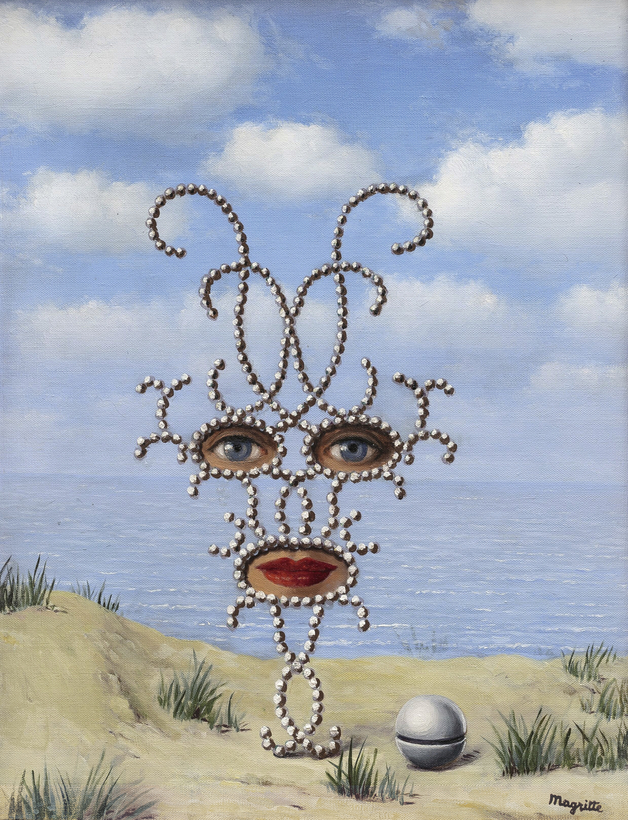Salvador Dalí, the flamboyant Spanish master of melting watches and fiery visions, may be the most well known of all Surrealists. But it is the cool, disarmingly deadpan still lifes, portraits, landscapes, and interiors of René Magritte, born in Belgium in 1898 (six years before the birth of Dalí), that live and breathe in popular culture and the collective imagination.
Few artists have been as plagiarized as Magritte—who himself appropriated Picasso, Giorgio de Chirico, Egyptian hieroglyphs, and Alice in Wonderland. Such classic logos as the Beatles’ Apple and the CBS Eye were lifted from Magritte. He inspired works by Andy Warhol, Jasper Johns, and Robert Gober, and countless album and book covers—from Styx’s The Grand Illusion to Milan Kundera’s The Unbearable Lightness of Being. The films of Jean-Luc Godard and Terry Gilliam, the movie poster for The Exorcist, and the dapper bowler-topped mob in the Pierce Brosnan remake of The Thomas Crown Affair all owe something to the understated Belgian Surrealist.

Magritte’s popularity is due partly to the fact that he mostly copied himself. Both a professional advertising illustrator and a painter, he advocated for a painting machine that would generate endless variations of a small number of his paradoxical motifs: floating boulders; gargantuan apples; anthropomorphic coffins; women with heads covered by cloth; faceless, suited men in topcoats and bowler hats; and perplexing pictures of pipes claiming, “This is not a pipe.”

“The Magritte Machine,” an exhibition of more than 90 works opening next week at Madrid’s Museo Nacional Thyssen-Bornemisza, includes multiple versions of Magritte’s most notable artistic themes. This recurring imagery, and the symbolic parallels found in his life, have long raised Freudian eyebrows. To wit: Magritte’s father was a tailor, and his mother, a milliner, drowned herself when René was 13. Weeks later, when her body was recovered, her nightdress was wrapped around her head, obscuring her face.
Whether or not young René witnessed his mother being pulled from the river is immaterial. Magritte’s synthetic, conceptual paintings—which sometimes contain text, and in which the differences among people and things are effaced—suggest absurdist posters that upend reality. So prevalent is Magritte’s influence that any comprehensive exhibition makes him look like a time traveler appropriating us—instead of the other way around. We’re left to ponder: Was he prophetic, or are we playing the parts he created for us? —Lance Esplund
“The Magritte Machine” opens September 14 at the Museo Nacional Thyssen-Bornemisza, in Madrid


 Discover
Discover